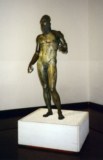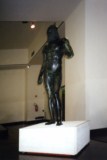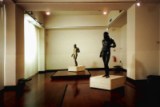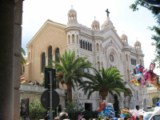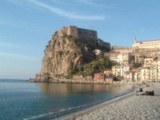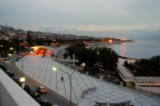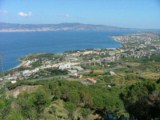|
REGGIO CALABRIA AND BRONZI DI RIACE - CALABRIA- SOUTH ITALY
HOTEL ROOMS ACCOMMODATIONS OFFERS IN REGGIO CALABRIA
WHERE TO EAT WHERE TO HAVE FUN EXCURSIONS SPONSORS Reggio Calabria stands in a splendid seaside position at the right end of the "toe of Italy", Calabria, on the eastern coast of the "Strait of Messina", that opens in the Ionian Sea. This town has ancient origins and was born probably at the same time of the other "Calcidian" town, Messina, in Sicily. Thanks to it it's great position that put the town at the centre of the most important communication line of the time, Reggio became very prosperous and aristocratic. At the time of the Greek expansion in Italy, Reggio allied with the Romans for protection against the invaders and then became part of the Roman Empire.
Today Reggio's National Museum hosts many remains of history and art, as well as archaeological collections of Basilicata and Calabria, but the real attraction are the "Bronzi di Riace". Two human size statues made out of bronze. The reason why they were found at the bottom of the sea bed of "Riace" is unknown. The bronzes look human and divine at the same time, at the very close edge between reality and myth. They represent the Greek conception of heroism and beauty, the classical composure and dynamic vitality. These elegant bronzes are wonderful works showing a very refined taste and consequently they date back most probably to one of the most flourishing periods of the Greek civilization and of the culture of the whole mankind, the representation of the human body is very expressive and realistic in many anatomical details. A question rises... who do they represent? no one knows exactly which two characters they are supposed to represent, neither the paternity or origin, but surely they were warriors armed with lances and shields. |
||||||||


